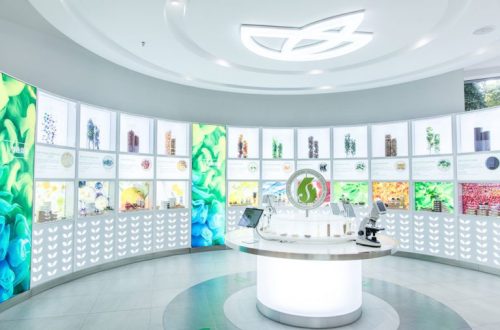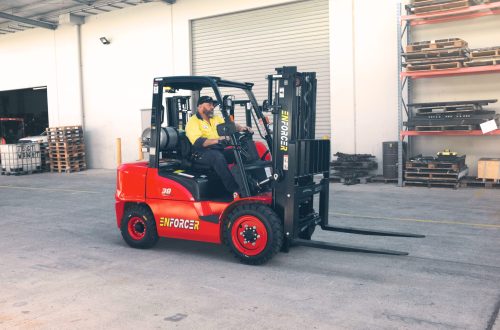Spreadsheets and raw dashboards seldom inspire action on their own. Executives and frontline employees alike grasp insights faster when complex metrics are transformed into compelling narratives supported by intuitive visuals. This art—visual storytelling with business data—blends design thinking, cognitive psychology and analytical rigour to ensure that numbers drive decisions. Professionals often begin honing these capabilities during a business analysis course, learning the principles of chart selection, colour theory and audience‑centric framing. Yet the true impact of visual storytelling emerges when these foundational skills intersect with strategic messaging, data governance and organisational culture.
Why Narrative Beats Numbers Alone
Human brains are wired for stories. Research shows that well‑structured narratives trigger memory recall and emotional resonance far more effectively than isolated statistics. A waterfall chart illustrating cost overruns may convey the ‘what,’ but layering it within a story of market disruption and competitive response delivers the ‘so what’ and ‘now what’ that spark action. In 2025, as machine‑generated insights proliferate via self‑service BI platforms and AI assistants, the differentiator for analysts is their ability to weave data points into persuasive arcs that align with organisational objectives and stakeholder motivations.
Core Components of Effective Visual Stories
- Contextual Hook – Set the stage by linking data to a pressing business question: “Why did customer churn spike last quarter?”
- Conflict and Tension – Highlight the gap between current performance and strategic targets, creating urgency for change.
- Data‑Driven Evidence – Present charts that illuminate root causes without overwhelming viewers.
- Resolution and Call to Action – Offer clear recommendations, supported by scenario modelling and impact estimates.
Each component should be crafted with careful attention to visual hierarchy—use of white space, colour emphasis and annotation—to guide the audience’s gaze through the narrative flow.
The Toolchain for 2025 Storytelling
Modern storytellers wield a diverse toolkit: Tableau and Power BI for interactive dashboards, D3.js or Flourish for custom web graphics, and presentation software with embedded live data connectors. Immersive technologies like augmented reality allow executives to explore virtual revenue funnels in 3‑D, while natural‑language generation tools draft narrative captions that adapt to viewer drill‑downs. Selecting the right tool involves balancing development effort, scalability and governance requirements; robustness in change‑management processes ensures visual integrity as data refreshes.

Design Principles That Boost Clarity
- Minimalism – Strip away non‑essential gridlines and chart junk, directing focus to key insights.
- Colour Consistency – Employ brand palettes and colour‑blind‑safe schemes; use hue sparingly to highlight deviations.
- Progressive Disclosure – Begin with high‑level KPIs, then allow drill‑downs for stakeholders needing granularity.
- Annotation and Storyboards – Use text callouts and sequential layouts to connect insights, avoiding cognitive overload.
When applied rigorously, these principles transform dashboards from static reports into persuasive communication assets.
Embedding Stories in Organisational Workflows
Successful visual stories live beyond presentation day. Integrated into daily stand‑ups, quarterly business reviews and self‑service portals, they become dynamic guides for decision‑making. Version control and data lineage tracking guarantee that refreshed visuals remain trustworthy, while feedback mechanisms—comment threads, usage analytics—inform iterative enhancements. Analysts who shepherd this lifecycle cultivate credibility and ensure continuous relevance of their stories.
Tailoring Narratives to Diverse Audiences
Executives care about financial impact and strategic risk; product teams seek friction points along user journeys; finance wants variance explanations. Effective storytellers adapt tone, vocabulary and visual granularity to each audience segment. A waterfall chart might morph into a slopegraph for design teams, or a geographic heat map for logistics planners. This adaptability requires empathy and active listening—soft skills often refined through role‑play scenarios in a business analysis course, where participants defend recommendations under timed stakeholder challenges.
Measuring Storytelling Impact
Quantifying narrative effectiveness moves beyond vanity metrics like dashboard views. Organisations track decision lead‑time reduction, adoption rates of recommended actions and ROI linked to data‑driven initiatives. Surveys gauge clarity and confidence improvements among stakeholders, while A/B tests compare engagement with story‑centric decks versus data dumps. Analysts reviewing these metrics refine story structures, iterate on visual elements and adjust distribution channels for maximal influence.
Building a Personal Storytelling Portfolio
Recruiters increasingly expect interactive examples, not static CV bullet points. Aspiring storytellers curate a public portfolio on platforms like Tableau Public or GitHub Pages. Each project should outline business context, design rationale, and measurable outcomes. Blogging about design iterations—why a beeswarm plot replaced a cluttered bar chart—demonstrates reflective practice. These artefacts complement credentials from a formal business analyst course, showcasing applied mastery.
Common Pitfalls and How to Avoid Them
- Data‑Ink Ratio Ignored – Visuals saturated with gradients, 3‑D effects and redundant labels obscure insights.
Solution: Follow Edward Tufte’s principles; remove non‑informative ink. - Overly Complex Colour Scales – Rainbow gradients may signal distinct categories but confuse sequential trends.
Solution: Use diverging palettes for variance, sequential for magnitude. - Story Without Substance – Slick visuals that lack statistical rigour erode trust.
Solution: Document methods, display uncertainty bands and offer drill‑down details.
Continual peer reviews and usability testing catch these issues early, preserving credibility.
Educational Pathways and Continuous Learning
Visual storytelling sits at the nexus of design, analytics and behavioural science. Mastery demands iterative learning: online challenges like Makeover Monday hone design agility; books on cognitive load deepen psychological insight; and workshops with leading practitioners share emerging best practices. Pairing these self‑directed resources with the structured curriculum of a course creates a scaffolded growth trajectory. Bootcamp‑style hackathons further embed skills by pairing analysts with real businesses seeking visual solutions.
Future Outlook: AI‑Enhanced Narrative Generation
Artificial intelligence is beginning to automate templated storytelling—auto‑generated captions, dynamic annotation suggestions and voice‑controlled dashboard exploration. Analysts will shift towards curatorial roles: validating AI‑proposed narratives, embedding ethical context and orchestrating multi‑modal story experiences across augmented‑reality boardrooms and mobile push notifications. Keeping pace requires an experimental mindset, rapid prototyping skills and relentless curiosity.
Conclusion
In 2025, visual storytelling is no longer an optional embellishment but a core competency for business‑analytics professionals aiming to drive decisions. By translating data into context‑rich narratives, analysts bridge the gap between insight and impact. Structured learning—starting with a solid business analyst course and complemented by practical challenges—equips practitioners with both the technical toolkit and the soft‑skill finesse to succeed. Continuous refinement through feedback, community engagement and AI‑driven innovation ensures that visual storytellers remain indispensable interpreters of business data in an increasingly complex world.
Business Name: ExcelR- Data Science, Data Analytics, Business Analyst Course Training Mumbai
Address: Unit no. 302, 03rd Floor, Ashok Premises, Old Nagardas Rd, Nicolas Wadi Rd, Mogra Village, Gundavali Gaothan, Andheri E, Mumbai, Maharashtra 400069, Phone: 09108238354, Email: enquiry@excelr.com.





